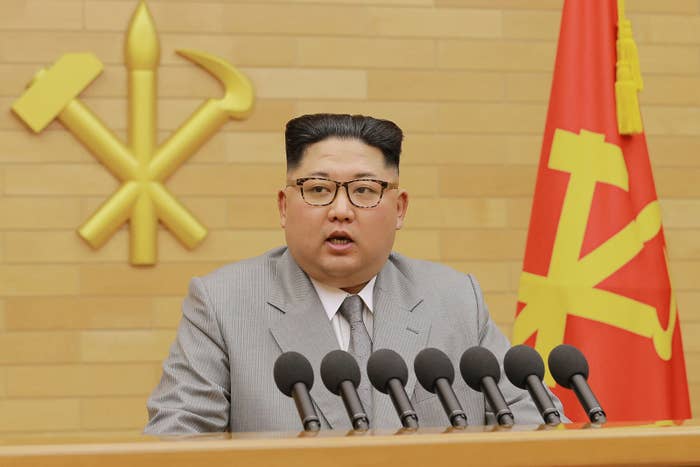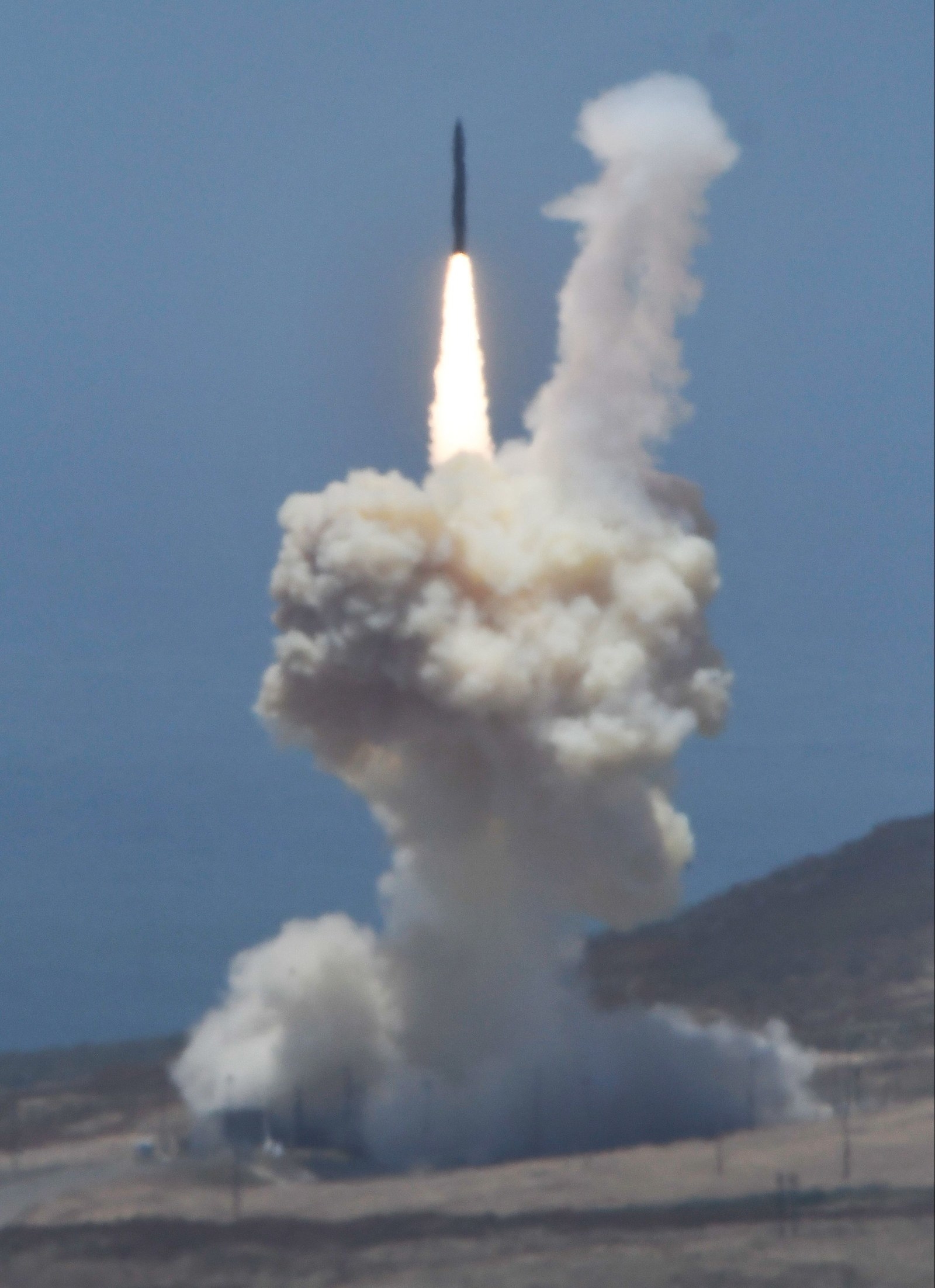
The false alarm Saturday of a "ballistic missile threat inbound to Hawaii" was the latest reminder of a cruel reality: Despite being closer to North Korea than the US mainland, the 50th state may have some of the nation's least reliable missile defenses.
As North Korea’s missile capabilities have grown dramatically, the threat that has grabbed the headlines is the increasing danger to Washington, DC, or Chicago.
But Hawaii, with its key military installations and its isolation from defense systems intended to protect the mainland United States, might be a far more attractive target should North Korea's Kim Jung Un decide to carry out an attack.
“When they show you a map of the North Korean threat rings, they almost never show the Hawaiian islands,” retired Air Force Lt. Gen. Dan Leaf, who served as deputy commander of US Pacific Command and vice commander of the Air Force’s Space Command, told BuzzFeed News.
Hawaii's location in the middle of the Pacific might even lead Kim to believe he could launch an attack and get away with it.

“If Kim launched a missile toward Hawaii that ended up hitting the ocean, he could say it was intended to be a demonstration,” Leaf said. “He can afford to miss it, hit the ocean, and claim success. If he launched one at Los Angeles and it hit the Nevada desert instead, it would not be as credible.”
The Defense Department's Missile Defense Agency, the Pentagon, and Hawaii’s lawmakers have all expressed confidence that existing US missile defense systems can protect Hawaii. But belying that confidence is an urgent push to upgrade those systems as North Korea has stepped up its own missile program, firing 23 missiles in 16 tests over the last year.
Despite assurances that Hawaii is well defended, the state's vulnerability has been the underlying warning in Washington, from hearings on Capitol Hill to spending in the annual defense budget.
Hawaii is covered by the current US missile defense system with interceptors based at Vandenberg Air Force Base in Santa Barbara County, California, and at Fort Greely in eastern Alaska, not far from the Canadian border. They are part of a ground-based missile defense system, known as GMD, that consists of a network of anti-ballistic missiles, radars, and other defense equipment designed to protect the US from ICBMs, the shorthand for intercontinental ballistic missiles.
US Pacific Commander Adm. Harry Harris told the House Armed Services Committee in April that "our ballistic missile architecture is sufficient to protect Hawaii today." But he also pointed out that that system "can be overwhelmed.”
"if Kim Jong Un or someone else launched ICBMs against the US, then someone would have to make a decision about which ones to take out or not,” he said.
In his comments on the 2018 annual defense authorization bill, Rep. Mac Thornberry, the Texas Republican who chairs the House Armed Services Committee, warned that the current systems “provide limited ballistic missile defense capabilities today” for Hawaii.

Many current and former military officials say that protecting the islands is a tougher challenge than the mainland given the compressed response time and smaller margin for error.
It would take between 15 and 20 minutes for an ICBM to travel to Hawaii from North Korea. The public could have as little as 8 to 12 minutes of notice before the attack started, according to state officials.
The US military is starting to upgrade Hawaii’s missile defenses by improving the islands’ radar system, which is currently handled by the floating Sea-Based X-Band Radar that can track an ICBM in mid-flight. But that radar is scheduled for maintenance in dry dock in 2020. An advanced land-based missile-tracking radar, projected to cost $1 billion, won't be deployed until 2023, at the earliest.
Only after that can the military talk about deploying interceptor missiles on the islands to fend off possible attacks.
For Leaf, that's too slow.
"I’m pretty sure Kim Jong Un won’t be worried or deterred by a long-term development program,” Leaf said. “We still need it, but it won’t complicate his calculus now.”
Leaf advocates shorter-term investments, such as basing some interceptors on the islands, which might complicate North Korean decision-making.
Despite headlines that Saturday’s false alarm sparked widespread panic, Hawaii is the one state where the general population has given the issue serious thought and treats it as a realistic threat.
Last month, Hawaii residents heard the wailing of a nuclear warning siren for the first time since the Cold War. The different warning systems have been in the news for months, and many residents knew something was off when they did not hear the siren on Saturday.
That is largely due to the efforts of the Hawaii Emergency Management Agency, which launched a public education campaign last summer to prepare residents for the possibility of a ballistic missile strike through commercials, drills, disaster management plans, and regular testing.
A single 150-kiloton weapon detonated over Pearl Harbor on the main island of Oahu could kill 18,000 people and injure 50,000 to 120,000 others, according to the agency.
